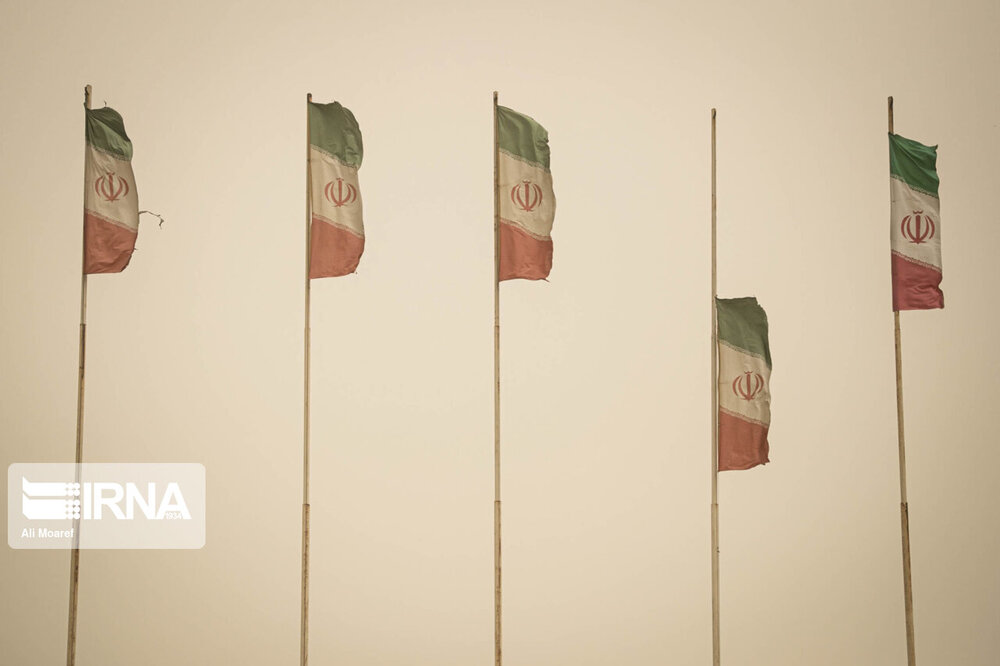Intl. meeting on SDS control to be held in Tehran

TEHRAN – Tehran will host an international meeting on controlling sand and dust storms (SDSs) in July, with the presence of the ministers of 12 countries that give rise to the highest amount of dust, IRNA reported.
It is therefore planned to implement a regional action plan for the Persian Gulf, especially for the countries with the highest dust emissions, Ali Mohammad Tahmasebi, head of the national working group for SDS mitigation, stated.
“There are numerous bilateral and multilateral agreements with neighboring countries, including Iraq, Syria, and Turkey, but no operational action has been taken, so the agreement alone is not enough and this issue should be resolved with the help of international institutions.
Two sub-action plans have been developed for West Asia, including Iraq, Syria, Iran, and the Persian Gulf, and for Central Asia, including its eastern, northern, and northeastern neighbors, including Turkmenistan and Uzbekistan, which should be implemented with the cooperation of the United Nations Economic and Social Organization for Asia and the Pacific (SCAP), the Asia-Pacific Center for Development of Disaster Information Management (APDIM), the United Nations Environment Program (UNEP) and the United Nations Development Program (UNDP), he explained.
Internal and external sources
The SDSs phenomenon has been plaguing the country for several years and has caused problems in many provinces. According to experts, natural and human factors are involved in the occurrence and severity of this phenomenon which is mainly caused by excessive consumption of water and drying up reservoirs.
Natural and human factors are involved in the occurrence and severity of this phenomenon which is mainly caused by excessive consumption of water and drying up reservoirs.
Over the past two years, the precipitation rate has been on a downward trend, as a result, sources of sand and dust storms (SDSs) have increased compared to a year before, Ahad Vazifeh, head of the national center for drought and crisis management said.
The internal dust sources are estimated at 34.6 million hectares, generating an average amount of 4.22 million tons of dust per year, about 1.460 million hectares are dried wetlands.
Some 4.23 million tons of dust are raised per year, which means the loss of soil fertility will hit the agricultural sector.
All the SDSs sources are not located in Iran, 300 million hectares in the neighboring countries are giving rise to SDSs, which transport dust into Iran. The total dust density is estimated at about 150 million tons.
In fact, the dust is raised from Turkmenistan, Uzbekistan, Afghanistan, and Pakistan in the northeast as well as Iraq, Syria, Saudi Arabia, and Jordan in the south, southwest, and west.
What are the consequences?
In 2021, APDIM published a report entitled "Sand and Dust Storms Risk Assessment in Asia and the Pacific" which found significant findings on the impact of dust storms on agriculture, energy, environment, aviation, human health, glacier melting, and cities.
The report reveals that sand and dust storms pose risks to both society and the environment and directly threaten the achievement of 11 of the 17 Sustainable Development Goals. Mobilizing coordinated regional action is paramount to reducing risk and strengthening resilience to the negative transboundary impact of sand and dust storms.
Findings show that more than 6 million people in different cities in China, Iran, Pakistan, and Uzbekistan have been breathing unhealthy levels of air pollution caused by dust storms for at least 10 months in 2019.
In Central Asia, 80 percent of the total population is exposed to high levels of poor air quality caused by severe dust storms. In addition, large areas of agricultural land are affected by dust particles. In Turkmenistan, 71 percent, Pakistan 49 percent, and Uzbekistan 44 percent of agricultural lands are affected by dust particles.
Large amounts of SDSs, with high salt content, are toxic to plants and also reduce soil and water quality. Some crops are more sensitive to this phenomenon. For example, dust can dramatically reduce cotton production considerably.
SDSs also have a significant impact on the energy sector. The assessment shows that in only a small part of the energy sector (economic losses due to reduced efficiency of solar generators), dust storms incurred losses of more than $107 million in India, $46 million in China, and $37 million in Pakistan.
The report identifies areas that are expected to see an increase or decrease in dust storms over the next decade, based on forecasts of drought and water stress, as well as the current situation.
Iran forerunner in fighting SDSs
Iran is a leading country in the knowledge and analysis of dust storms and has conducted some of the most important research in this field. Therefore, it is recommended to rely on this ability and make more assessments of the economic and social impact in different sectors.
The country has a history of leadership in the international community in dealing with dust storms as cross-border disasters.
Addressing issues such as climate change and natural disasters, such as dust storms that occur in different regions and their influence extends beyond political boundaries, requires bilateral or multilateral negotiations between governments and through developed political frameworks or international organizations such as the United Nations.
FB/MG
Leave a Comment